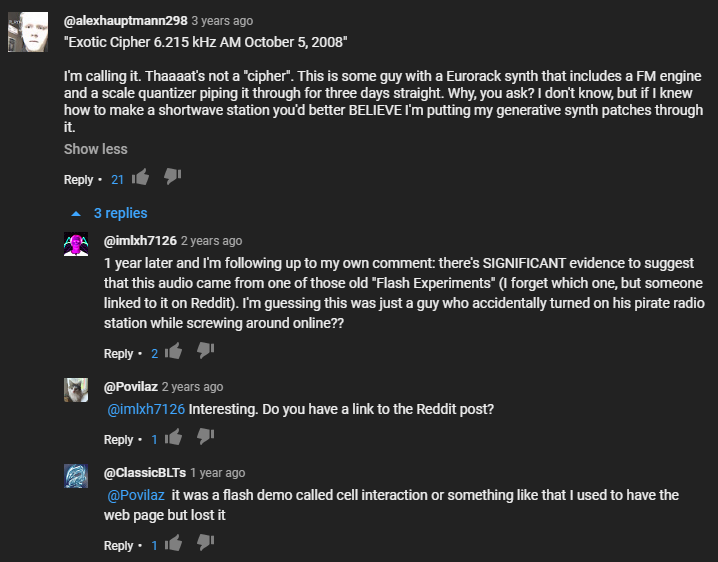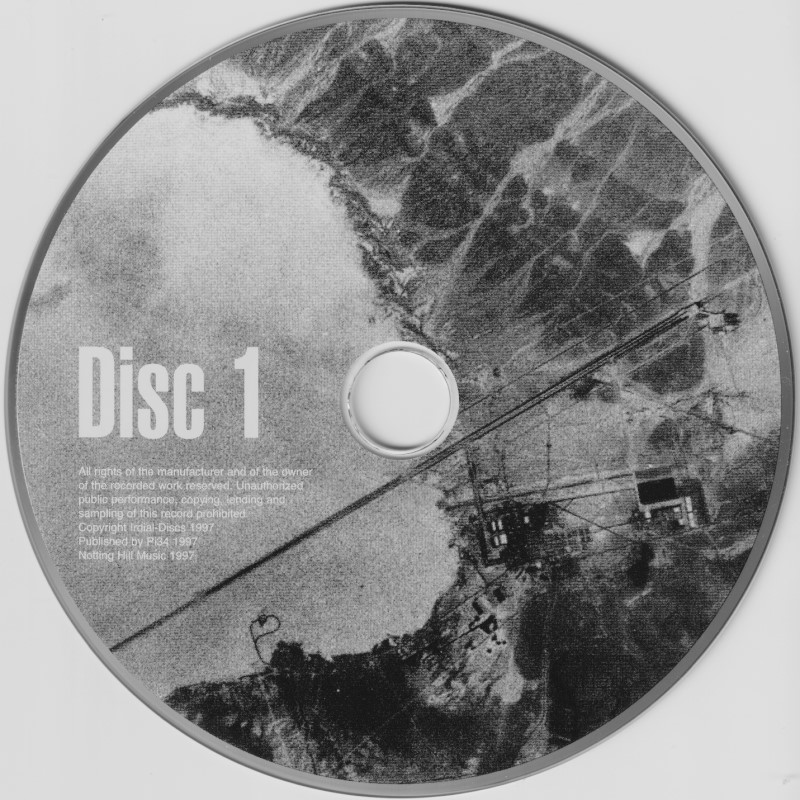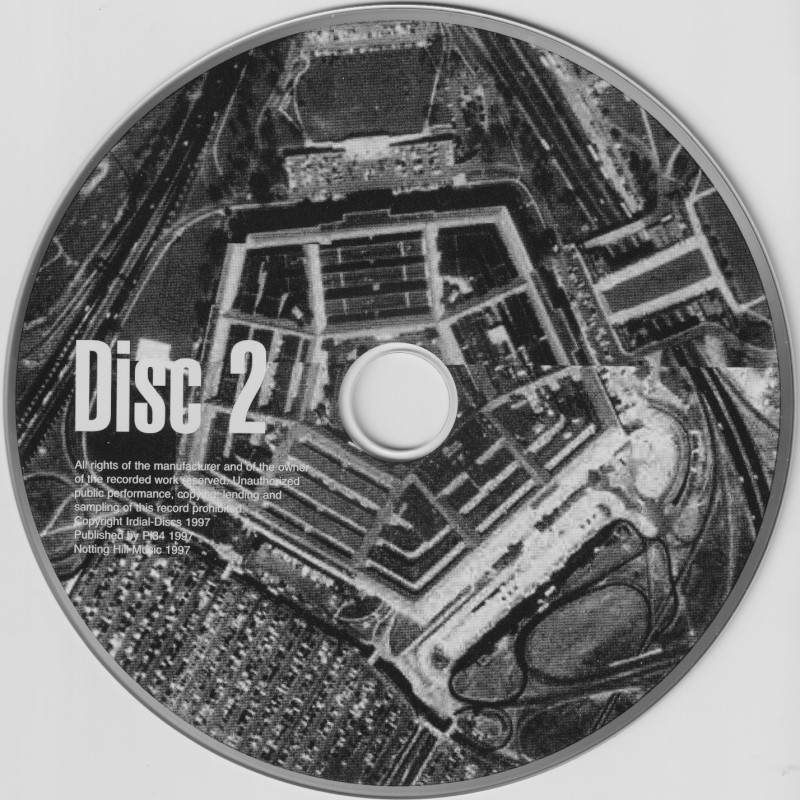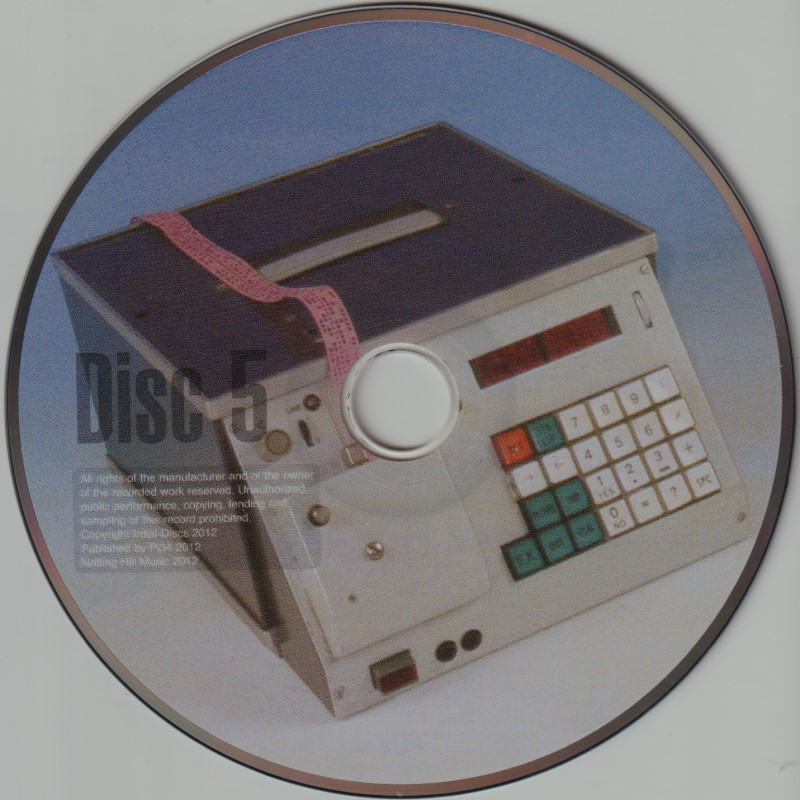Spring is here, my friends, and that means you’re all probably starting to leave your houses for sunny pastures. I have a bit of paranoia for you to take out there–obscured messages also sent out into the world, ones no one but the people they were meant for have been able to or will ever be able to crack. Who are those people? What do the numbers mean? Who are the Russian Man, the Spanish Lady, the Lincolnshire Poacher, Bulgarian Betty? What is Ciocarlia, the Buzzer, the Tyrolean Music Station? What the fuck does “snudering” mean?
Let me take you on a journey of circumstantial government intrigue. I’ll let the boxset explain before I do, run-ons preserved:
Almost every other piece of information on who is responsible for Numbers Stations comes from the part-time investigations of dedicated listeners. No government or person will admit to transmitting them, and only recently, due to the release of this CD set has GCHQ in the UK made its first ever public station on Numbers Station, saying that, “GCHQ are aware of the existence of Numbers Stations but cannot comment on operational matters”. Do “operational matters” include the ‘The Lincolnshire Poacher’ which is believed to be of British origin? With direction finding equipment it is possible to track down the location of transmitting antennas, and in the case of Numbers Stations which uses extremely powerful transmitters ‘Dfing’ [sic] the more powerful stations has proved an easy task for investigators but what exactly does it mean when you find an antenna farm on US government property blasting numbers in Spanish? Where and who are the recipients?
Speaking another language in a crowded room
“Shortwave” is a term for a band of radio frequencies between 2.3MHz and 26.1MHz. It doesn’t really refer to its frequencies–in fact, most shortwave activity happens on a small subset of those frequencies–it refers to the physical wavelength of the broadcast waves. (This is why sometimes, you’ll hear people refer to the “20 meter band” or suchlike.) None of that matters for our purposes today, it’s just some nice backstory. The important thing about the shortwave spectrum to us is that it’s really good at using the ionosphere, which is a good chunk of Earth’s atmosphere, to broadcast really far away. Like, into other countries.
In the States, we’re used to radio reception in what we call the FM band (actually the lower-middle parts of the VHF band, but I’ll stop being technical), which go so little distance that a single car trip into another state can expose you to three stations using the same frequency. AM radio tends to go further, sometimes a couple hundred miles, but shortwave goes even further. The issue being, the lower the frequency, the further it propagates, but the lower the sound quality–good enough for speech, but less so for music. Audiences in the 70s looking to listen to Steely Dan and the Allman Brothers in high quality instead of talk radio tuned towards FM instead, and AM and shortwave have declined in popularity ever since. Boo-womp.
That doesn’t mean everyone’s been tuned out, though. Shortwave’s far reach has made it rather attractive to warring governments looking to broadcast into enemy territory, either to reach their citizens, a la Radio Free Europe, or to reach their own spies. Sometime after World War II, strange broadcasts began to appear on shortwave, speaking strings of numbers in various languages using synthesized voices, playing random bits of music, and being generally elusive. Some of these broadcast infrequently, others on highly rigid schedules. Some aren’t even in a language; some broadcast in morse code, others in strange polytones that involve lots of bipping and beeping, and others still mostly in noises. Very strange noises.
Only a single number station has been sorta claimed by any government, and how they work is generally accepted, but not confirmed. The general thought is that the numbers being broadcast are to be used with a “one-time pad”, which is a small, easily concealed sheet of numbers. The spy would set up his radio in town, get his numbers, do some math between the pad and the broadcast, and he’d have his orders. What makes this such an ingenous system is that without reuse of and recovery of the one-time pad, it’s impossible to crack what’s being said. Any number of one-time pads could be used to turn the broadcasts into any number of equally-plausible messages. That means that the actual messages in the recordings you’ll hear in this post will never be recovered.
Not everything broadcast on shortwave is illegal or under-the-table, but as popular use starts to wane in favor of the Internet, who’s left but the time stations and the number stations? While I don’t own a shortwave radio at the moment, I do happen to own a quite nice, large boxset with many recordings of it known as The Conet Project. This set was originally released as four discs in 1997 featuring cassette airchecks of these shortwave oddities, many courtesy of Irdial Discs (who the set was released through) owner Akin Fernandez. A 2013 15th anniversary reissue added a fifth disc of possible alien activity. We’ll get back to that.
Procuring the elusive Conet boxset
Now, to be clear: it’s not hard to get a digital copy of The Conet Project. It’s on the Internet Archive for download, PDF booklet and all. Irdial have their entire catalog up for download now, which is very kind of them. I’ll be sure to check out some electronica later. For now, let’s get back to Conet.
Getting a physical copy of the boxset is rougher. There’s two editions of it, the classic four disc set and the 15th anniversary reissue with the extra fifth disc. This isn’t available in the digital copy, making it exclusive to actually owning the boxset (or I guess listening on Apple Music), and that drove me nuts. I remember Cinema Snob saying “I don’t like the idea of something existing if I can’t get a copy of it” once, and I identify heavily with that sentiment. Problem being, while copies of either set come up on Discogs occasionally, they’re uncommon and expensive, and when you do find one of the reissue, oftentimes, it doesn’t come with the fifth disc! What’s all that about? Why did they all nick the extra disc but sell the rest off? (This project is just nothing but questions…)
Worse yet, while Irdial is still selling the Conet reissue as of writing this, they have this absolutely batshit price doubling scheme going on, causing the last two copies to go for an ass-pounding $5,000 and $10,000 each. Payment only in Bitcoin, please.
The day came when I was last in Wales, some time in February 2024, and standing on the platform at Cardiff Central waiting to get on the train with my girlfriend. She got to talking about buying some things off the Internet she was previously hesitant to, specifically Okami merch, and it reminded me of having seen a copy of the reissue Conet, mint and complete, on Discogs for £200. (That was $250USD at the time of purchase.) Knowing this set was hard to find in any form, let alone mint and complete, and knowing I wouldn’t have to eat the international shipping costs buying it then, I decided to pounce. I was already blowing tons of money on the trip and I was high off being with a cute girl. It happens.
It shipped quickly (though Royal Mail gave me plenty of paranoia not updating the tracking until shortly before it arrived), came very nicely packaged in both two layers of bubble wrap and a strange, thin cardboard filling that some of her guinea pigs loved and others found quite terrifying indeed, and I held in my hands the fabled Conet Project. We listened fascinated through the fifth disc, amused greatly at the Doctor Who noises throughout, and I stashed the rest away in my bag, praying nothing bad would happen to it on the flight home. Indeed, it’s now safe and sound at Somnolescent HQ.
The physical package
It turns out that the Conet boxset is actually a small collection of jewel cases and postcards, giving me some clue as to why folks were losing parts of it. This is a shame, given how rare the reissue is, but perhaps Irdial will give us all another one for Conet at 30.
Still, what you get in it is terrific. For one thing, you get a nearly 80 page booklet featuring essays, the ENIGMA list of recognized stations, their message formats, and a more plain English exploration of the stations in disc order. The only thing that would’ve made this perfect would’ve been a proofreader. There’s plenty of missing punctuation, strange capitalizations, occasional formatting failures and font wonkiness, and some misspellings (“we would be very exited to hear from you”). None of it detracts from the content, but ya know, this was still $60 new.
The fifth disc comes in its own jewel case with its own, less detailed but full-color, booklet of some photos of a speech/morse generator purportedly used to generate the kinds of broadcasts you hear on the boxset, inside and out, plus some scans of a recovered one-time pad. It’s some heavy duty Cold War technology, and I kinda love to see it. (Maybe I should get into Cold War history sometime, what a fascinating era.) You also get a couple of postcards, featuring photos of embassies and the Sprach-Morse-Generator once more. It’s pretty cute.
Worth £200? Let’s not go down that road, this is rare and I’m happy to own it. I figure, since it’s such a rare set and fetches such a nice penny, I’d show off as much as I can of the physical issue so you can admire it with me. Shall we listen to some broadcasts?
Highlights from the discs
(I do warn you that these are pretty bizarre to listen to, especially at first encounter. They’re oftentimes extremely lo-fi, difficult to hear clearly, the text-to-speech voices disturbed, and the snippets of music warped and bizarre. I’d say it’s the classical music snippets that just sound the most wrong, and I’m not sure why. Perhaps it’s how human they are, caked in wow and flutter, squeezed over the tiny bandwidth of shortwave? That said, it’s the texture of these that makes them so interesting to listen to. This was not meant for public consumption, and it sounds it.)
(Also, I’m unable to get to everything on these discs for time, space, and redundancy reasons, so this section will amount to a sample platter. You’ll get the gist. The aforementioned Internet Archive link is there if you want to dig in further.)
Disc one: “Group…one”
“The Swedish Rhapsody” is probably the best introduction to the whole set they could’ve chosen. It’s got everything: beeping to start the track out, the interval signal of a music box playing said “Swedish Rhapsody” (actually the “Luxembourg Polka”, if the declassified materials are to be believed), and one of the freakier electronic voices on the set, that of a little girl or a high-pitched woman. This is one of the number stations we know the most about, thanks to the aformentioned declassified Polish intelligence confirming who operated the station, the secret police force of the Polish People’s Republic, and that the aforementioned Sprach-Morse-Generator was used in generating the broadcasts, modified to put the pitch of the voice way up for some reason. Additional evidence towards this is that the original Swedish Rhapsody station disappeared with the fall of communism in Poland, circa 1991.
When you get past the intrigue and the strange, off-putting texture of the broadcasts, there’s something hypnotic about a lot of them. The Swedish Rhapsody bangs between the broadcasted voices and that same, looping music box sample over and over, and each station lines up, interval signal first, broadcast second, only differentiated by their languages and the oddities of individual stations. The first disc contains a Taiwanese number station, a real rarity, that announces itself as New Star Broadcasting (also a rarity). Wilco fans will be rather familiar with “Phonetic Alphabet – NATO”, broadcasting in letters rather than numbers, with its notorious “Yankee Hotel Foxtrot” interval signal sampled on “Poor Places”, getting the band in trouble with Irdial thanks to Yankee Hotel Foxtrot‘s popularity. Frankly, the feedback coda in the song is a big part of the transmission sounds so distressing–but hearing it unencumbered is very curious as well.
“The Lincolnshire Poacher” is the best-known number station probably because of the weirdly friendly, humorous face it puts on the whole thing. The interval signal is a calliope machine playing the first two bars of the folk tune of the same name, and the voice, that of a nasal British woman, is the only one to have intonation, as the last number of each group is said much perkier than the rest. It’s still a computer voice, but she’s almost human, in the sea of shortwave noise around her, and it makes her all that much more approachable. What follows immediately after, the East German “Gong station” that gets its name from the worn out tape of gongs that acts as its interval signal, is one of the chilliest instead; that tape has been stretched so thin, it’s off-key, it’s woozy, and it audibly fails towards the end of the sample. I found “Ciocarlia” to be even stranger sounding; see above about classical music.
Whether this disc is why the heavy hitters in the number stations world are as big as they are or whether they were already noteworthy and shuffled onto disc one for that reason, this is probably all you’ll need to listen to if you’re not set on the whole set. Do keep reading, though: things get weirder from here on out. A lot weirder.
Disc two: “Delta foxtrot delta”
Something feels off (well, more off) by the time you get to the second disc. The stations stop having cute names. The voices sound more disturbed, uncomfortable. The recordings are rougher, coated in poor signal quality and ringing noises, thanks to having far fewer examples of each broadcast to choose from. The interval signals get stranger, usually just computerized beeping (in the case of the NNN family of stations). As far as number stations go, it’s harder to get more unnerving than the emotionless English-language version of NNN–except, perhaps, the German version of NNN, courtesy of that ghostly whir.
After a spin through a few more phonetic alphabet stations, an alternate version of the Lincolnshire Poacher that uses the melody to “Cherry Ripe” as its interval signal instead, and a Russian Man who appears to be saying “LOL, LOL, LOL” (track 32 on disc two if you’re curious), you get to some of the most curious, eerie, and fun to listen to stations on the whole disc, the polytone stations. These broadcast their message in beeping tones, as opposed to talking or morse, and I have no idea what they’re meant for or who could decode them. Those familiar with my own musical pursuits might recognize the interval signal of track 39 as the main melody to my song “This Nadir” from In Free Fall–though I really wish I’d also built the actual message into that track as a contrasting little freakout bit. Would’ve made it a lot more interesting to listen to as a song, but still, was a comforting little familiar sound to hear after all this military espionage, somehow.
Well, until “Oriental Language” came and crackled and screeched its way through my speakers. God, this stuff is unnerving to listen to.
Disc three: “2-1-9-5-1, repeat”
Disc three starts to really rope in the military intrigue angle. Not only do you start to get some recordings of the Lincolnshire Poacher and the English Lady being jammed (where a competing military or insurgency group tries to broadcast noise top an existing broadcast to prevent it being heard clearly), but the disc even ends with a clip of one of the shortwave stations broadcasting “5-5-5-5-5” in a loop, something apparently commonly heard on it during the days of the 1991 August Coup, right before the official dissolution of the Soviet Union. If that’s not proof of what these are used for, I don’t know what is.
Some highlights from this one include the two recordings of E9, the Magnetic Fields, which is a “new” station, as the book puts it (this was written in 1997, remember, and it also hasn’t been heard since 1997), G14’s demented Game Boy music, a number station with two live announcers (a rarity on both counts), and two different transmissions from the Tyrolean Music Station, which were somehow recorded all the way back in 1971, before home recording had really taken off. According to this blog post on priyom.org, which you should absolutely read because it’s a stunning post with lots of fascinating information, The Tyrolean (Tyrol being an alpine region between West Austria and Northern Italy, according to the booklet) Music Station was run by the French intelligence service SDECE not just for their agents behind the Iron Curtain, but also for members of the National Alliance of Russian Solidarists, a clandestine anti-Communist organization based out of West Germany, to receive messages and contact each other. It ceased operation in 1975 for reasons disputed.
It’s also just weird to listen to. Ya like yodeling?
Disc four: “konec, konec”
It’s on the last disc that the numbers descend into pure, noisy chaos. From the second track, “YT”, an electronic chattering can be heard, occasionally louder than the actual voice transmission. Track eight, “1-10 Announcement”, is affected with echo and distortion; track 12, “Pozor”, sounds like a Dalek disappearing into an eerie, woozy fog of whir. Later on, pure noise stations take over, with names like “The Buzzer”, “Faders”, “The Backwards Music Station”. The Conet Project saves its most batshit stations for last.
Each station is assigned a number and letter designation by ENIGMA to make referring to them clearer, the letter referring to their operating language, either G for German, E for English, S for various Slavic languages, V for others, M for stations that transmit in morse, or X for stations that simply broadcast strange noises with little other content. The Lincolnshire Poacher, for example, is E3, while the Swedish Rhapsody is G2. Nearly all of the second half of the disc are devoted to the X and M stations.
It’s a little unfair to refer to these as pure noise stations though. The Buzzer, better known as UVB-76 (which is actually a mistranscription of “UZB-76”), is a notorious Russian military communication station that uses the buzzing sound (which hasn’t been heard on it in years by this point–the tonewheel used to generate it frequently malfunctioned, failing audibly even on the Conet recording) as a channel marker to deter others from using the frequency. Human voices are heard on UVB-76 on occasion, actually getting more frequent in recent years no doubt thanks to the war effort in Ukraine. It’s funny to think that it was once theorized as a component of Russia’s “Dead Hand” system for guaranteed retaliatory nuclear hellfire should its frequency ever get interrupted; the reality is much more banal, unfortunately.
My guess is that most of these noise stations are actually unaccompanied jamming machines, given that a couple of them are actually caught jamming other number stations on these recordings. You can hear “Workshop” jamming E10 (“Phonetic Alphabet – NATO” from the first disc) under that thick shag of rumbling and grinding noises, fittingly like industrial equipment. The morse stations are less obscure in their purpose–but of course, even fewer of us can understand morse code, so perhaps the chittering is the most fitting end to the boxset they could’ve gone with.
Ah, but what of disc five?
Given that I explicitly sought this set out for this one disc, what do I think of it? And what even is it? Haven’t we been through enough number stations?
Well, that’s the funny thing. These aren’t number stations. In fact, I don’t know what they are. This is a disc of various strange noises captured over shortwave, everything from drones to tones to strange repetitive clicking to databursts to noises so bizarre that words had to be invented for them, like “Snudering”. They’re a lot like the strange noise stations at the end of disc four, where some are likely to be jammers, even named as such in the titles, and you can’t imagine there’s anything on Earth that creates these noises and puts them out over the air. Perhaps this disc contains proof that we are not alone?
The theories in the YouTube comments range from “this is naff” to “this is bog standard scientific equipment noise” to “someone was playing their electroacoustic music over shortwave” to “one of these probably comes from a Flash game”, according to a Redditor:

Okay, so it’s noises. What’s the big deal? Well, that’s the thing–these are really fucking cool noises. Some are legitimately really awesome, noisy drones, like something you’d hear while you’re playing Quake, or otherwise sound like riffs and intros to an industrial track (or, in the case of “Rapid Descending Tri-Tone”, a Yes song). They don’t really carry the creep factor of the main boxset for the most part (or they carry it even more, depending on what you find creepy), outside of just being bizarre and possibly unexplained. But aliens is the most fun option, so we’re going with that. It’s what Torrone would want.
Some final thoughts
Part of what makes The Conet Project so difficult to judge as something to listen to is that it’s really meant as a historical recording. Most of the stations on the boxset are no longer active, and some weren’t even active by the time Conet went to print. That’s why this is so thorough. Multiple broadcasts from the same stations are often featured. Nonconforming messages and sister stations are included in duplicate. There’s 176 tracks over the five discs. Like a lot of things I cover in blog posts, this is thorough to a fault–if you’re listening casually. For those who are interested in the study of number stations for military history or cryptography, it’s sublime. A one-disc sampler of the most famous shortwave oddities for the rest of us would’ve been a damn good idea, really, but I guess their thinking was that, if you’d buy one disc of it, you’d buy four discs of it as well.
It was never about the recordings, though. Mass media was exploding into new mediums every 20-30 years by the 1900s, and two groups always pick up those mediums first, pornographers and the military. It’s the context of knowing, as the years go on and as documents get declassified, that certain stations were run by certain governments to target agents involved in specific operations that makes the recordings come alive. If you take it strictly as noise, well, it’s noise. Noise that’s definitely freaky at first, but even that fades fairly quickly. I’ve gotten much used to disembodied computer voices over four discs of them.
That’s not to say they don’t still hold aesthetic appeal, of course. Especially in the context of the noise and polytone stations and the entirety of disc five, the warped, poor quality sounds packed over the airwaves still ring dystopian, holding fascination in the same way the old Protect and Survive shorts or reading about CIA experiments in the dead of night do. I also find these appealing as a historian more of the musical sort, the way that bands and artists continually sample these recordings as sonic shorthand for an inability to communicate, a sense of dread, the dystopia of war, a feeling of being alien. They fit perfectly into a noise coda or among a backdrop of synthy blipping.
For me, I bought this because I find the topic fascinating, because I revisit these recordings time and again, and because I like owning hard copies. That’s my side of it. I’m also quite happy to have finally heard the whole set after putting it off for many years. Conet is a peculiar little jewel in my collection of now over 200 CDs, and hopefully it’ll expire with me as well.
Now, do you need a five-disc boxset of scratchy clandestine airchecks on your shelf? I mean, I can’t deny having it is fucking cool, because it is, but no. For people with a passing interest in this stuff, the Internet Archive item gives you the 80-page booklet as a PDF and MP3s of the set, the source recordings of which are so lo-fi that the low bitrate hardly makes a difference in the sound. You’re only missing disc five, but that’s available on Apple Music, iTunes, and your favorite piracy site. I’d be more likely to say yes if it wasn’t for how rare and expensive Conet is secondhand. Irdial are clearly more interested in a physical Conet set being a collector’s piece, given the thousands they’re currently charging for the last two new sets in their possession, than letting more than a couple thousand people get hold of them.
On that note, I think Irdial are rather on the kooky side. Reading their site gives you a lot of smug self-satisfaction, portraying themselves as forward thinkers while grammatical errors go unchecked and half their site melts into link rot. About the only thing Irdial is actually known for is The Conet Project, yet they routinely refer to themselves as a “near-seminal techno label” who divined that they should release all their stuff online as MP3s all the way back in the 90s (them and no one else). I mean no disrespect–Conet is a lovely set, warts and all, and I do really intend to check out the music as well. They’re just also pretentious UFO chasers who intentionally destroyed most of the physical pressings of their back catalog To Make A Statement, and that’s a bit silly, isn’t it?
Perhaps you have to be a kook to compile something like this, or to listen to something like this, or to spend £200 on something like this. Perhaps we’re more alike than I think. Perhaps the numbers are actually just saying “happy International Women’s Day”, as the US government alleges. Perhaps everything is alright and it all makes sense–or perhaps that’s what they’re hoping you feel. Perhaps the kooks were right all along. Achtung!














